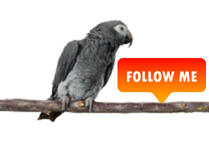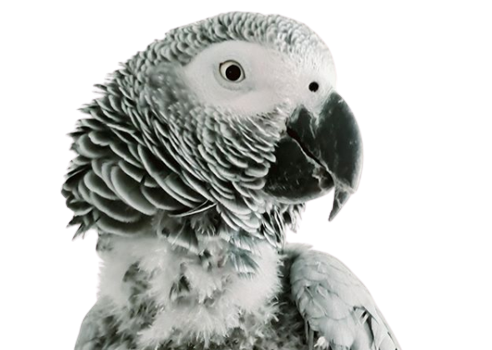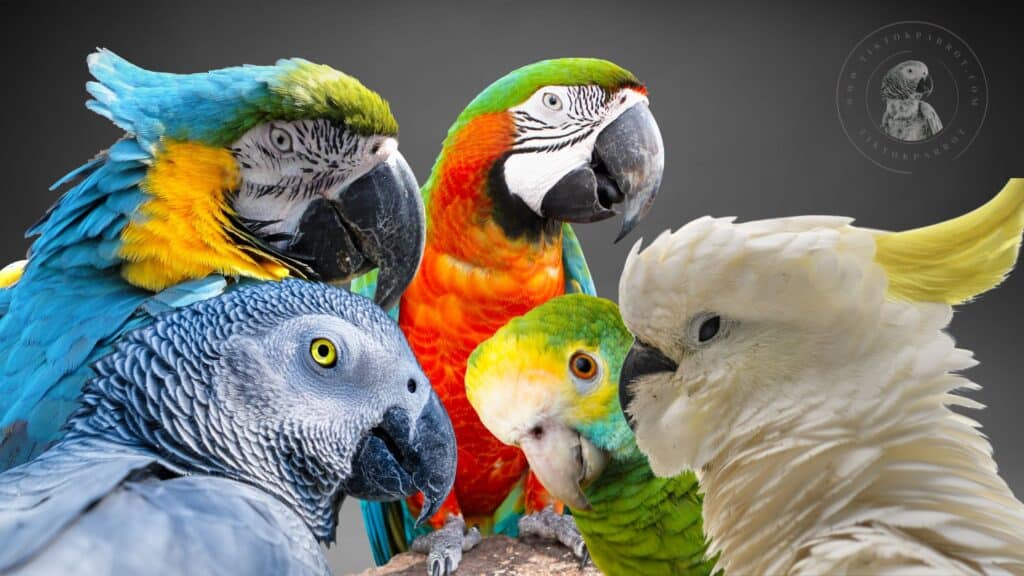Hey there, parrot pals! Welcome back to TiktokParrot.com, your one-stop shop for all things parrot health and happiness. Today, we’re venturing into a topic that might sound scary, but knowledge is power! We’re talking about avian tuberculosis (TB), a sneaky disease that can affect our feathered friends. Don’t worry, though, this isn’t a one-way ticket to panic island. Let’s shed some light on avian TB, learn how to spot the signs, and keep your feathered buddy thriving!
Spot the signs & prevent avian tuberculosis in your parrot! Learn how to keep your feathered friend healthy and happy.
Imagine your parrot as a tiny explorer, pecking around and discovering the world with their curious beaks. Unfortunately, this adventurous spirit can sometimes lead them to unwelcome encounters with bacteria. Avian TB is caused by a specific type of bacteria called Mycobacterium, and while it’s not super common, it’s important to be aware of it.
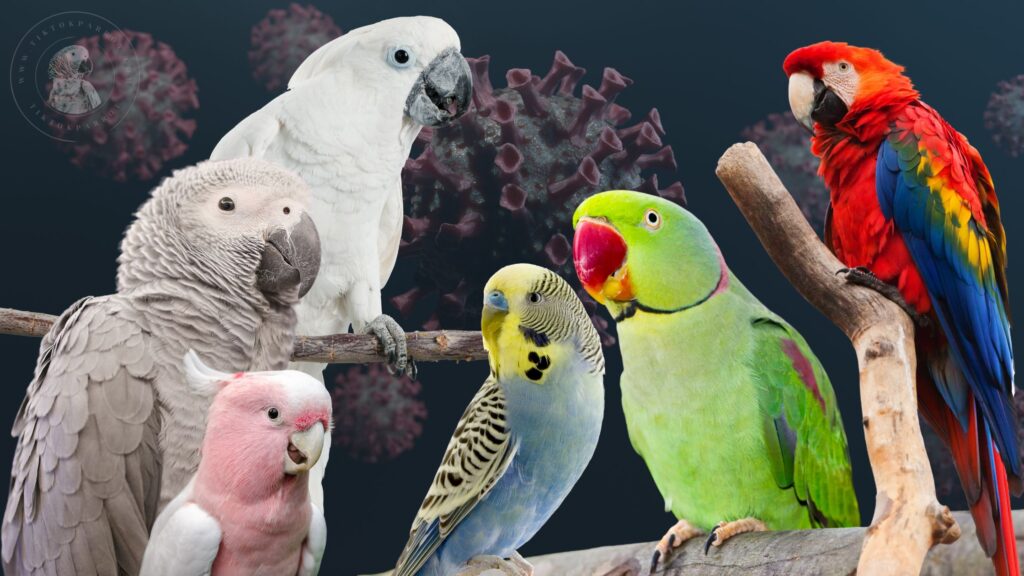
what is tuberculosis:
Avian Tuberculosis (ATB) is caused by Mycobacterium avium, a type of bacteria. These bacteria are straight or slightly curved rods, and they are very small. They are hard to stain but can be seen under a microscope. Mycobacterium avium is part of a larger group of bacteria called Mycobacterium avium complex (MAC), which also includes other related bacteria. Many species of birds, including parrots, cranes, and waterfowl, are susceptible to Avian Tuberculosis.
How Does This Sneaky Bacteria Invade My Parrot’s Paradise?
Birds infected with Mycobacterium avium shed the bacteria into their environment, making it easy for other birds to become infected. The bacteria are usually spread through contaminated food and water. When birds ingest or inhale the bacteria, they can develop the disease.
It can take weeks to years for symptoms to appear after infection. The bacteria can also be spread through infected eggs, although this is less common. There is no evidence of Mycobacterium avium spreading from birds to humans.
The most likely culprits are:
- Contaminated Food and Water: Spoiled or dirty food and water are breeding grounds for unwanted bacteria. Picture a forgotten apple core turning into a germ hotel – not ideal for your parrot’s tummy!
- Contact with Infected Birds: Birds, like humans, can carry TB without showing any symptoms. A friendly chirp with a sick neighbor at the park could lead to your parrot catching this unwelcome visitor.
- Contaminated Environment: A dirty cage or play area can harbor bacteria. Imagine your parrot’s play zone turning into a germ gym – yuck!
Uh Oh, My Parrot Seems Unwell! What Are tuberculosis symptoms?
Birds infected with Avian Tuberculosis may suddenly die, even if they appear healthy. However, most birds will show symptoms such as weight loss, depression, diarrhea, increased thirst, and difficulty breathing.
Egg-laying birds may also experience a decrease in egg production. Once the disease develops, it is difficult to treat, and death is often the outcome.
Unlike the dramatic coughing fits you might see in movies, avian TB often works its magic behind the scenes. Here’s what to watch out for:
- Weight Loss: If your parrot seems to be shrinking a bit, it could be a sign of TB or another underlying issue. Imagine your once-chubby parrot looking more like a skinny feather duster – not a good look!
- Loss of Appetite: Imagine your parrot turning up his beak at his favorite treats – that’s a red flag! A healthy bird should be excited about mealtime.
- Lethargy: Is your usually energetic parrot suddenly napping more than usual? This lack of energy can be a sign of illness.
- Difficulty Breathing: In advanced stages, birds with TB might struggle to breathe. Think of your parrot taking deep breaths after a long flight – not good if they’re just chilling in their cage.
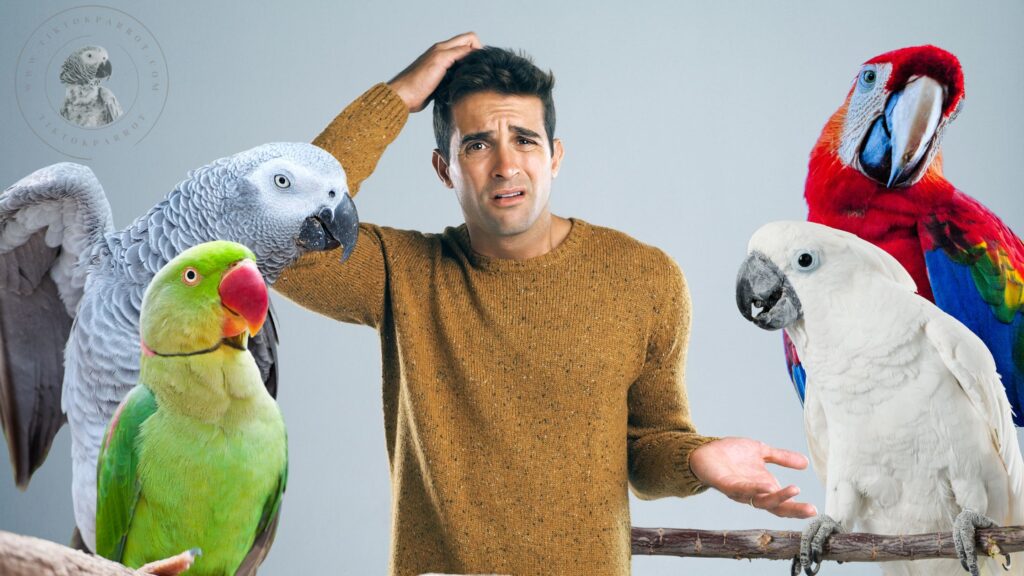
tuberculosis treatment?
Treating Avian Tuberculosis is challenging because the bacteria are resistant to many antibiotics. In many cases, treatment is not considered effective.
Preventing Avian Tuberculosis involves reducing stress and overcrowding among birds, providing proper ventilation, and ensuring they have a nutritious diet. Quarantining new birds for at least 1-2 months and testing them for Mycobacterium avium can help prevent outbreaks in aviaries.
Treating avian tuberculosis (TB) is a complex issue compared to human TB. Here’s why:
- Limited Effectiveness: Medications commonly used for human TB may not be very effective against the bacteria causing avian TB (Mycobacterium avium).
- Long Treatment: Even if attempted, treatment for avian TB can be lengthy, lasting 12-18 months.
- Cost Factors: Long-term treatment can be expensive and may not be a viable option for all bird owners.
Due to these challenges, complete cure is not always guaranteed. However, there are still steps that can be taken:
- Supportive Care: Even if complete eradication of the bacteria isn’t achievable, providing supportive care can improve the bird’s quality of life. This may include medications to manage symptoms like pain or difficulty breathing, as well as maintaining a clean and stress-free environment.
- Veterinarian’s Guidance: Consulting an avian veterinarian is crucial. They can assess the severity of the infection and determine the best course of action, considering factors like the bird’s species, overall health, and the owner’s resources.
If you suspect your parrot has TB, the first step is to seek professional help. A qualified veterinarian can diagnose the problem and recommend the best course of treatment. This may involve antibiotics, supportive care, and, in some cases, isolation to prevent the spread of the disease.
Prevention is Key: Keeping Your Feathered Friend TB-Free!
Diagnosing Avian Tuberculosis involves testing for the presence of Mycobacterium avium. This can be done using PCR assays to detect the bacteria directly or ELISA assays to detect specific antibodies produced in response to the bacteria. These tests can help confirm the presence of the disease in birds.
Since treatment can be challenging, focusing on preventing avian TB is essential. Now, let’s talk about building a fortress around your parrot’s health! Here are some simple steps you can take:
- Fresh Food and Water Daily: This is like offering your parrot a five-star dining experience every day! Freshness is key to keeping bacteria at bay. Providing a healthy diet with fresh food and water daily reduces the risk of birds ingesting contaminated sources.
- Proper Hygiene: Maintaining a clean cage, food and water containers is vital to prevent the spread of bacteria. Regularly clean your parrot’s cage, toys, and food and water dishes with a disinfectant solution safe for birds. Imagine giving your parrot’s play area a spa day – they’ll appreciate it!
- Quarantine New Birds: Introducing new birds to a flock requires quarantining them for at least 1-2 months and testing them for Mycobacterium avium to prevent outbreaks. If you’re introducing a new feathered friend to your flock, quarantine them first to ensure they’re healthy. Think of it as a new student getting a check-up before joining the birdie classroom!
- Regular Vet Checkups: Scheduling regular checkups with an avian vet allows for early detection of any potential health issues.
My Final Thoughts (or Chirp!)
I would say avian TB can be a bit of a scary topic, but by being informed and taking preventive measures, you can keep your feathered friend healthy and happy. Remember, early detection and veterinary care are crucial if your parrot does get sick.
Let’s Flock Together!
Have you ever dealt with avian TB in your birds? Share your experiences, tips, and questions in the comments below. Together, we can create a healthy and happy environment for all our feathered friends!
If you found this blog helpful, It would be great if you could share it with your family and friends who might find it useful as well.
You might like to read these as well
Silent Spreader: The Scary Truth About Polyomavirus in Birds
Psittacine Beak and Feather Disease (PBFD) In Pet Birds
Understanding Chlamydia psittaci (Psittacosis) In Pet Birds
Understanding Pacheco’s Disease Symptoms, Transmission and Prevention
From Beaks to Bellies: Understanding African Grey Parrot Vomiting
How Do We Take Care of an African Parrot Grey’s Health?
What diseases can African Grey parrots get?
Why African Grey Parrots Pluck Feathers
For more useful content about African grey parrots, you can subscribe my site with your email to get notification upon publishing a new blog, the subscribe box you can see on the right side of this page. Also if you get an alert on your web browser while browsing my site, allow it and that will also give you an alert whenever I publish a new blog.
Stay safe and much love!

